
Even during the shortest days of winter, everyone loves to see beautiful blossoms. Evergreen camellia shrubs (Camellia spp. and cvs., Zones 6–10) are tough, long-lasting plants, and their beautiful winter-blooming flowers can help brighten up our short Pacific Northwest winter days. Their glossy, bright green leaves with toothed edges are punctuated with brightly colored, showy flowers that come in whites, pinks, reds, and even pale yellows. The petals are accompanied by golden yellow stamens. They prefer the acidic soils typical of the Pacific Northwest and enjoy even moisture, growing more drought tolerant as they mature and become more established. There are many species of camellia; the ones profiled in this article are cultivars and hybrids of the early blooming sasanqua camellia (Camellia sasanqua, Zones 7–9). In our region, sasanqua camellias bloom from December to January.
Camellias are versatile; they can be grown singly as shrubs or hedging plants, espaliered against a fence or building, or even arborized into small trees. They also work well as cut flowers to brighten the inside your home. Ultimately, most camellias will grow to about 12 to 14 feet tall and wide, but they can be controlled with yearly pruning. Make sure to prune in late winter after flowering to encourage new growth that will produce the next season’s flowers. Here are a few early blooming sasanqua camellias that will brighten your winter garden.
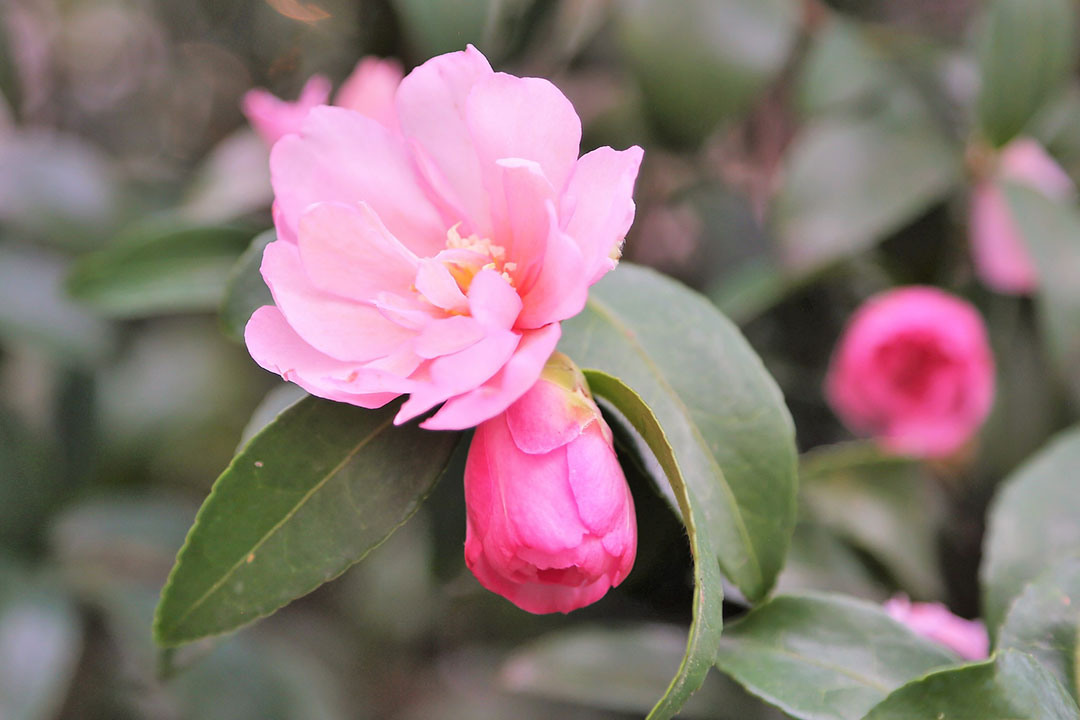
‘Pink Snow’ camellia, Camellia sasanqua ‘Pink Snow’, Zones 7–9
This beautiful camellia is double flowered. It is loaded with masses of shaggy, ruffled-edged 2-to-3-inch flowers that have a typical blooming period of 4 to 6 weeks, so you’ll have plenty of time to enjoy their beautiful bounty. This camellia is a good hummingbird attractor and a good fit for multiple styles of gardens—from those with woodland, to Asian styles, to modern designs.
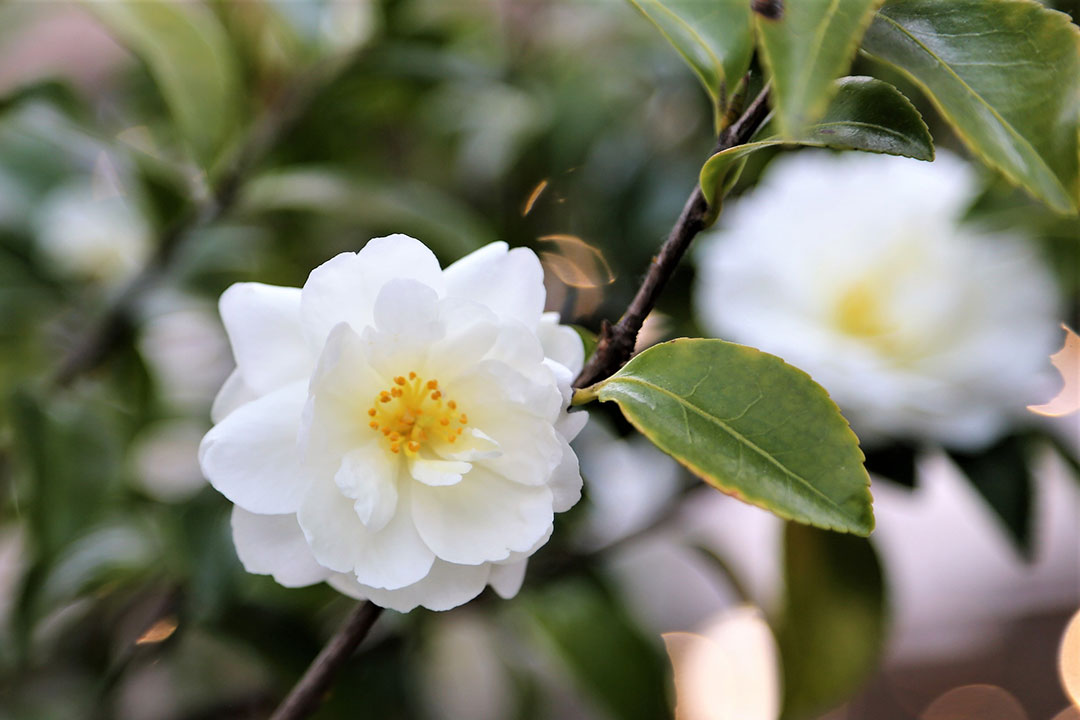
‘Setsugekka’ camellia, Camellia sasanqua ‘Setsugekka’, Zones 7–10
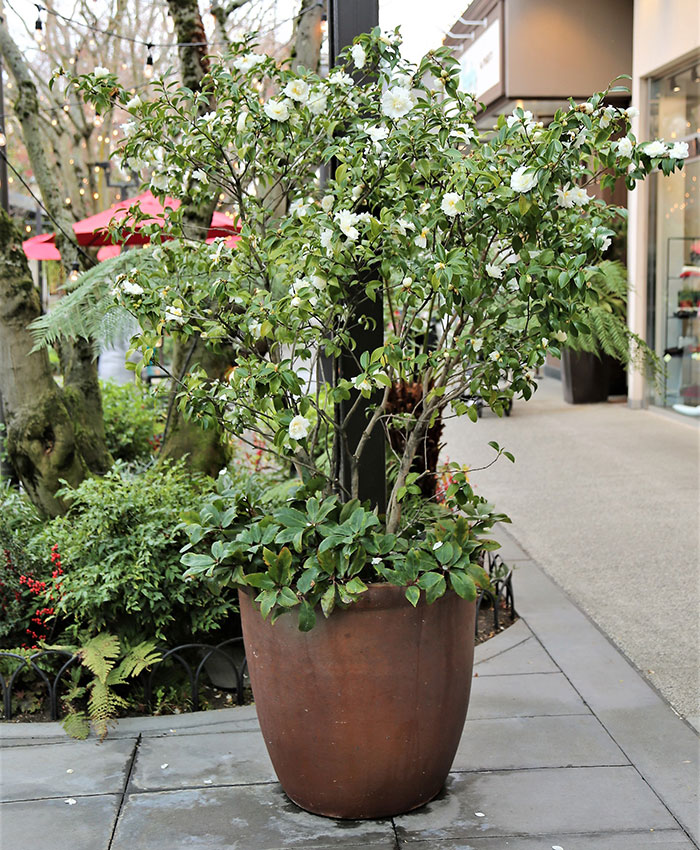
‘Setsugekka’ is an amazing camellia that hails from Japan. Setsugekka means “snow moon flower” in Japanese. This floriferous camellia has large, clear white double flowers that glow on clear winter evenings. This would make a great anchor plant in a white winter garden. ‘Setsugekka’ has a bit of a weeping habit, making it well-suited to an informal design. It works well as a loose hedging plant. I have also seen a few maintained in very large containers looking great in late winter, with branches decorated with masses of white flowers.
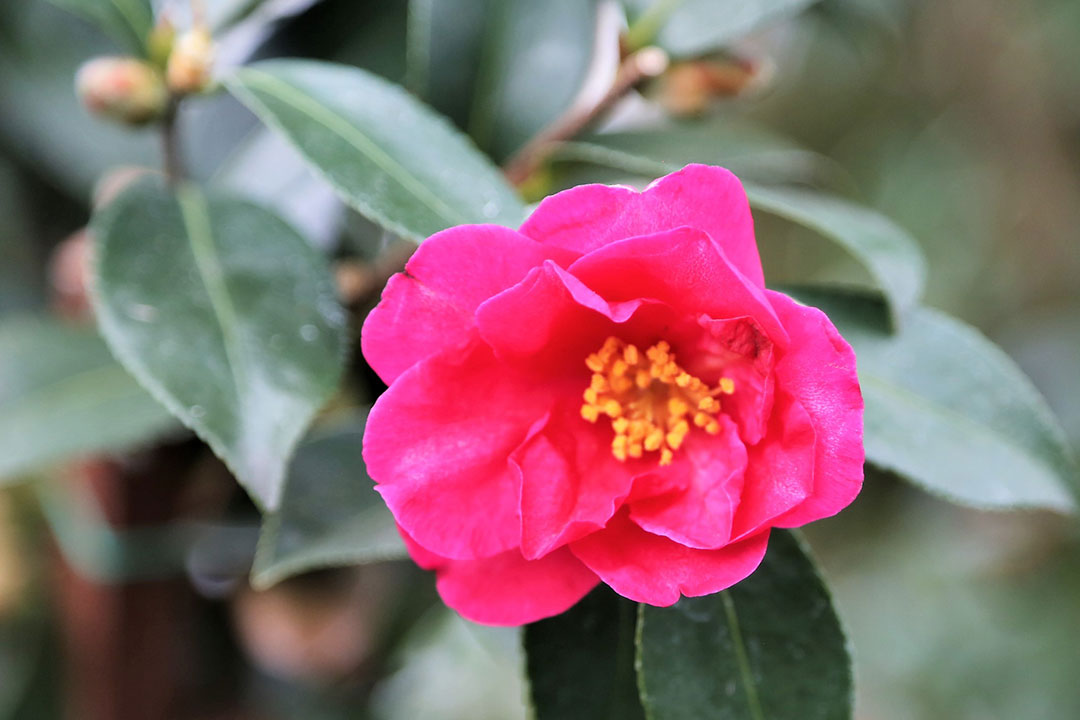
‘Kanjiro’ camellia, Camellia × hiemalis ‘Kanjiro’, Zones 7–9
This hybrid camellia is a cross of a sasanqua camellia and the more old-fashioned and late-winter-to-early-spring-blooming Japanese camellia (Camellia japonica, Zones 7–9). Because of this, ‘Kanjiro’ blooms slightly later than the other two sasanquas mentioned here. ‘Kanjiro’ has the some of the best traits of both of its parents. Lovely cerise pink semi-double flowers contrast well against dark green foliage. These blooms are more reminiscent of a Japanese camellia. However, the flowers drop off the plant after blooming, making it a tidier and cleaner plant year-round than other Japanese camellias (this flower dropping is a trait of sasanqua camellias). ‘Kanjiro’ would make a lovely arborized specimen as it matures in the garden.
After researching this article, I ran across another interesting sasanqua hybrid. ‘Buttermint’ camellia (Camellia × hybridus ‘Buttermint’, Zones 7–9) is a new camellia with pale buttery yellow flowers. I hope to see it blooming this year and maybe add it to my own garden. These beautiful winter-blooming camellias are one of many plants that help us enjoy gardening year-round. I hope you’re able to enjoy them in your own garden or local park. Even though the days are short here in winter, there is always something happening in the garden. Camellias are a reminder that winter is passing and that spring will be here sooner than we think!
—Jason Jorgensen is a landscape designer in Seattle.


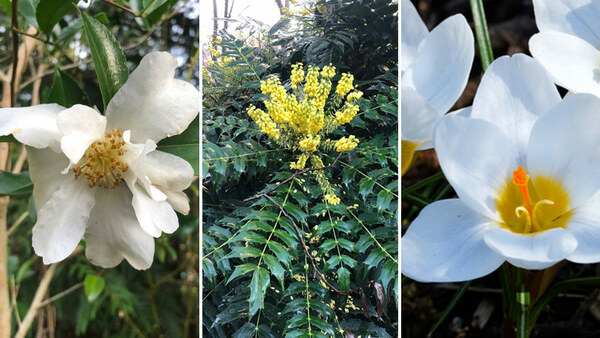
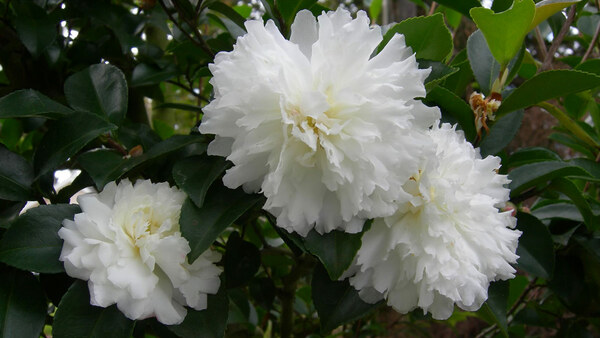














Comments
Log in or create an account to post a comment.
Sign up Log in